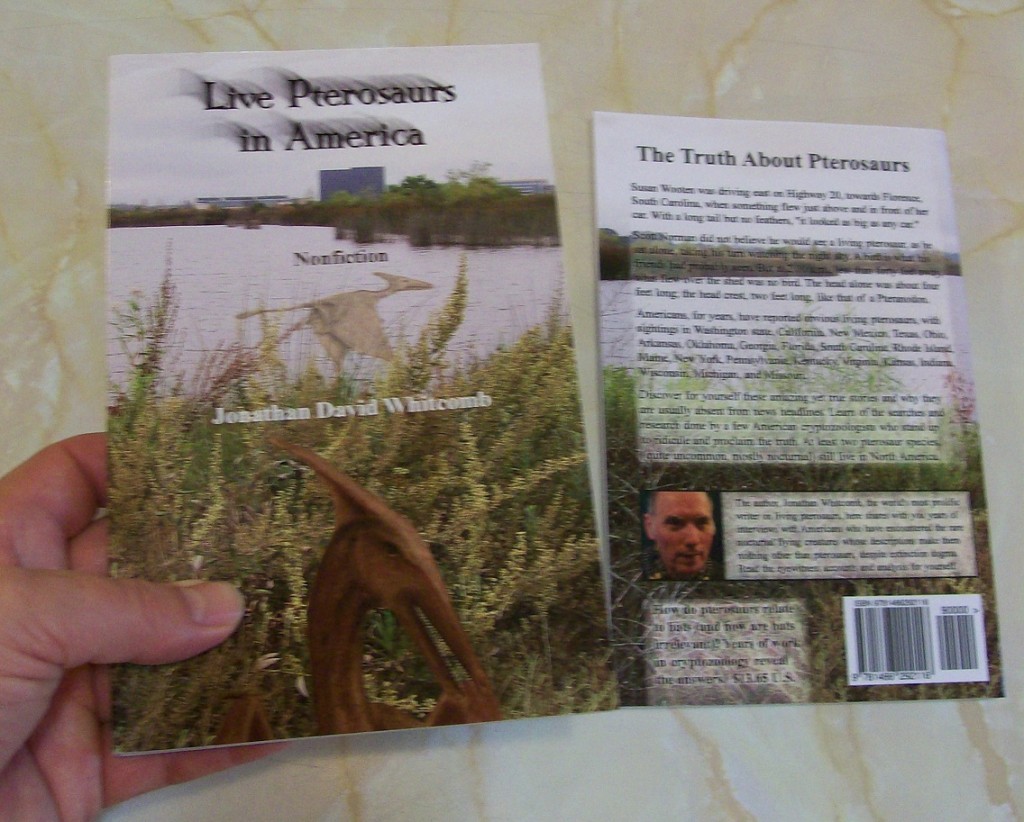Science writer Brian Switek, in an August, 2010, post for the online Smithsonian Magazine, titled his remarks “Don’t Get Strung Along by the Ropen Myth.” He may have gotten unanimous approval for pointing out that a photo of a frigate bird is not evidence for living pterosaurs, but he got a stern rebuke for mentioning the word “hucksters” for those who search for cryptids many had assumed have been extinct for millions of years, especially those who have searched in Papua New Guinea for the ropen. The rebuke was from the cryptozoology author Jonathan Whitcomb.
Ropen Ideas Shot Down by a Smithsonian Blogger
Brian Switek was correct in one point: The news reporter Terrence Aym fell into a serious blunder in referring to an image of a common Frigate Bird as if it were a ropen or pterosaur. (But Switek’s blunders are so serious that I will not even link to his blog post.)
In Whitcomb’s book Live Pterosaurs in America, the “Mesozoic Objection” in regard to the extinction of pterosaurs is criticized as follows:
What about the “Mesozoic” objection? One critic declares that a lack of “post-Mesozoic remains” (no fossils in “less-ancient” rock strata) proves a pterosaur could not live in modern times. But a subtle form of circular reasoning lies buried within this declaration about fossil rocks.
When a creature thought to have lived only in the Mesozoic time period is found in an undated stratum, what happens? That stratum is then labeled “Mesozoic.” So if a pterosaur fossil can cause it to be “ancient,” what can be reasonably concluded about an apparent lack of any pterosaur fossils in rocks not labeled “ancient?” Not a lack of modern pterosaurs. Standard-model labeling of strata relies a great deal on the axiom of ancient extinctions of certain organisms, and axioms are assumptions, not proven facts.
Pterosaur Extinction and Brian Switek
Switek seems to have entirely failed to comprehend what is entailed here. If the discovery of a modern living Coelacanth could have opened up the way for dating some Coelacanth fossils as being after the Mesozoic, the discovery of a modern living pterosaur could open up the way for dating some pterosaur fossils as also being more recent. This perspective was probably entirely overlooked by Switek.
Advertisement
Third edition of the non-fiction cryptozoology book Live Pterosaurs in America, by Jonathan David Whitcomb, gives you details unavailable in online blogs: many eyewitness sighting reports in many states of the U.S.A.
From a review of the second edition (Amazon.com):
“This is an updated review of the book and I am changing my rating to 5 stars. This book has been on my shelf for almost a year now. I pick it up every now and then and a part of me becomes more impressed by the book every time. Yes, the skeptics will laugh at it, but I am a skeptic to. Admittedly, my main interest in the subject is based in romanticism. However, it is apparent that these pterosaur stories will not go away.” (book review by Stevie, Oct 23, 2011, second edition of the book)



